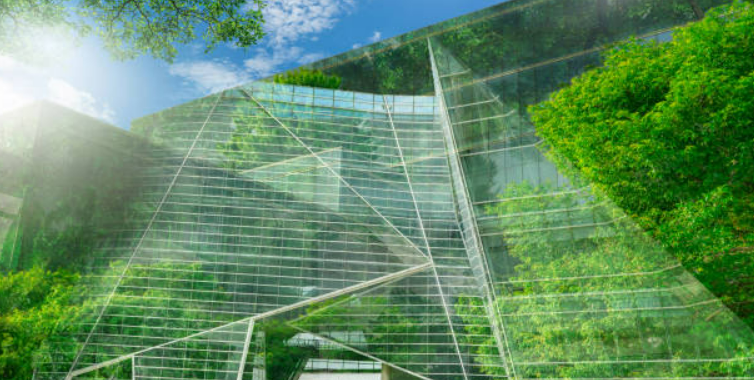The shift toward remote work has not only transformed the traditional office environment but has also spurred a wave of green innovation.
Remote Work
As companies embrace remote-first and hybrid work models, they are not merely adjusting to a new way of operating; they are actively seeking out and implementing sustainable solutions that enhance both their environmental impact and their operational efficiency.
Remote work and COVID
Remote work surged during COVID-19 primarily due to health and safety concerns, as businesses needed to reduce virus transmission and adhere to social distancing guidelines. Government-imposed lockdowns and restrictions further mandated the shift to remote work.
The rapid adoption of digital tools and collaboration platforms made this transition feasible, enabling teams to stay productive from home.
Remote work offered flexibility amidst office closures and ensured business continuity, allowing companies to maintain operations despite the challenging circumstances.
Still trending in 2024
Remote work and Sustainable Management is in the Top 10 green sustainability trends in 2024 even if a lot of manager wants their workers back since COVID passed, it will still stay with us…probably forever.
Environmental impacts of remote work
Reduced Greenhouse Gas Emissions
With fewer commutes, remote work significantly lowers the volume of vehicle emissions, contributing to decreased air pollution and helping to mitigate climate change.
Decreased Energy Consumption
Home offices reduce the need for large commercial office spaces, leading to lower energy use for lighting, heating, and cooling in buildings, which further decreases overall carbon footprints.
Less Resource Depletion
By cutting down on the need for office supplies and reducing the frequency of paper use, remote work helps conserve natural resources and minimizes waste production.
Decreased Urban Traffic
Fewer daily commutes lead to less congestion in urban areas, reducing the likelihood of traffic accidents and lowering the demand for road maintenance and infrastructure expansion.
According to an article in Harvard Business Review
With the daily commute all but cancelled during successive Covid-19 lockdowns, many have assumed that WFH will lead to environmental sustainability gains. Indeed, such dramatic changes in mobility, production, and consumption patterns, temporarily reduced global CO2 emissions by 17% in April 2020 compared to peak 2019 levels. But what seemed like a promising trend soon faded away: emissions are now almost back at pre-pandemic levels, even as employees aren’t.
….WFH is not a clear win for the environment. The net sustainability impact depends on several employee behaviors, from travel to energy use, to digital device and waste management. It also depends on several situational factors like home building and local infrastructure.
Enhanced Green Spaces
With fewer commercial buildings required, there’s potential for repurposing office spaces into green areas or community gardens, which improves urban biodiversity and supports ecological health.
Green Certifications for Home Offices: A New Standard
One of the most significant developments in the realm of green innovation driven by remote work is the push for green certifications and awards for home offices.

As remote work becomes more common, companies are emphasizing the need for home offices to meet environmental sustainability goals.
Many organizations now encourage employees to obtain green certifications, which often involve using sustainable materials, energy-efficient equipment, and eco-friendly practices. To facilitate this, some companies even subsidize certification costs.
These certifications, which can include energy-efficient lighting and low-VOC paints, help reduce the overall carbon footprint and set a standard for responsible remote work practices.
In the next article we will write more about The Green Certifications for Home Offices: Architectural Solutions for Sustainable Design topic.
Sustainable Home Office Equipment: From Energy-Efficient to Zero-Waste
The rise in green certifications is boosting the development of sustainable home office equipment.
Manufacturers are producing energy-efficient devices, like LED monitors and ENERGY STAR-rated computers, to cut energy use.
There’s also a growing market for zero-waste supplies, such as recycled paper and biodegradable accessories.
Companies are supporting this by offering stipends or resources for eco-friendly equipment, aligning with sustainability goals and enabling employees to support environmental efforts from home.
Green Buildings and Sustainable Coworking Spaces for Collaborative work
While remote work significantly reduces the need for traditional office space, there remains a need for occasional in-person meetings and collaborative work. In response, some organizations are investing in
- “green buildings” or
- sustainable coworking spaces that align with their environmental values.
Green buildings
Green buildings are designed with a focus on sustainability, incorporating features such as
- energy-efficient systems,
- green roofs, and
- green vertical gardens,
- sustainable building materials.

These spaces provide a flexible, eco-friendly alternative for remote teams to gather when necessary.
Sustainable coworking spaces
Sustainable coworking spaces are another innovation that blends the benefits of remote work with eco-friendly design.
These eco-friendly workspaces often feature green building certifications, energy-efficient systems, and sustainable materials, aligning with broader environmental goals.

feature green building certifications, energy-efficient systems, and sustainable materials
These spaces are often
- located in buildings with LEED (Leadership in Energy and Environmental Design) certification and
- are equipped with features like renewable energy sources and water-saving fixtures.
Using these spaces helps companies cut their environmental impact and energy use while providing a productive, collaborative environment. This approach enhances remote work flexibility and fosters a greener, more collaborative work culture.
Smart City and IoT developments
Remote work enhances and is enhanced by smart city and IoT developments in key ways:
- Optimized Infrastructure: reduced commuting eases traffic congestion, allowing smart city technologies to better manage urban resources.
- Reliable Connectivity: IoT ensures strong internet connections for seamless remote work, supporting effective communication and collaboration.
- Energy Efficiency: fewer office commutes lead to smarter energy use in buildings, with IoT managing real-time energy consumption.
- Environmental Monitoring: IoT sensors track urban environmental factors, and reduced office use helps lessen environmental impact.
- Efficient Space Use: smart buildings and co-working spaces use IoT to optimize space and resources, aligning with new rends.
A Driver for Broader Green Initiatives
The rise of remote work is also catalyzing broader green initiatives within companies. As businesses adapt to remote-first or hybrid models, they are rethinking their overall approach to sustainability.
This includes
- reevaluating supply chains,
- reducing waste, and
- adopting more sustainable practices across all areas of operation.
Moreover, it encourages companies to explore innovative solutions for minimizing their environmental impact. For instance, the reduction in office space usage leads to lower energy consumption and waste production.
Additionally, it can inspire companies to develop more sustainable practices for their entire operation, from green procurement policies to carbon offset programs.
Employee Engagement in Sustainability Efforts
Remote work has sparked a surge in employee engagement with sustainability. Passionate remote workers are forming green teams and sustainability committees, driving eco-friendly initiatives.
These teams create innovative solutions, from virtual eco-workshops to company-wide recycling programs, actively advancing green innovation within their organizations.
Conclusion: A Sustainable Future
The rise of remote work is revolutionizing more than just our work habits; it’s sparking a wave of green innovation.
As it becomes the norm, it’s driving advancements in environmental sustainability for companies too, from pushing for green certifications in home offices to investing in eco-friendly coworking spaces.
This shift is set to accelerate the adoption of innovative, eco-conscious practices.
Embracing remote work not only aligns business sustainability goals but also paves the way for a greener, more responsible future.
